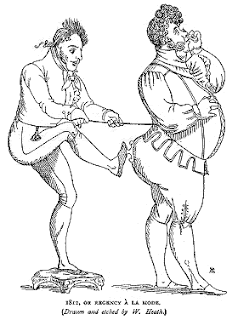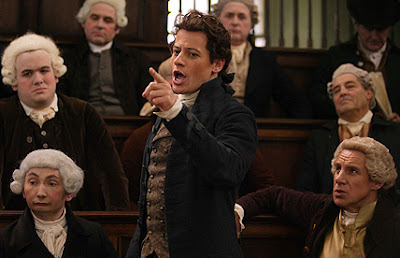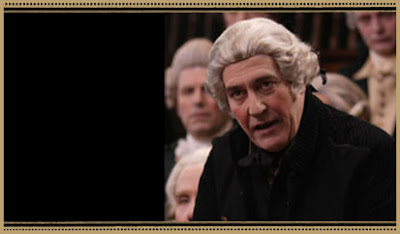 No one who had ever seen James T. Kirk in his infancy, or his childhood in Iowa, would have supposed him born to be a hero.
No one who had ever seen James T. Kirk in his infancy, or his childhood in Iowa, would have supposed him born to be a hero.
He had a thin awkward figure, a sallow skin without much colour, hair which was thinning by the age of twelve, and ordinary features;–so much for his person;–and not less unpropitious for heroism seemed his mind. Although he was fond enough of all boys’ plays, he excelled at none, except perhaps when it was his turn to keep score.
Instead, he greatly preferred the company of girls, and whether teazing their dolls, nursing a baby gorn, feeding a tribble, or watering his quadro-triticale, he always managed to make the girls laugh while looking into a soft-focus lens.
Such were his propensities–his abilities were quite as extraordinary. He could never learn or understand any thing before he was taught; and sometimes not even then, for he was often inattentive, and occasionally stupid, and therefore believed for his entire life that “one to the fourth power” was a very large number indeed.
His father wished him to learn physics; and James Kirk was sure he should like it, for he was very fond of using his grand father’s fertilizer to build small bombs, and knew that if he could only split atoms, his explosions would increase remarkably in size, without a similar increase in work on his part. Kirk studied physics for a year, and could not bear it;–and his father, who did not insist on his sons being educated in spite of distaste or extreme incapacity, allowed him to leave off.
 Such was James T. Kirk at ten. At fifteen, appearances were mending; he began to comb his hair over and long for green-skinned women; his complexion improved, his features were softened by make-up artists, his eyes gained more animation (especially in the 1970’s), and his figure more consequence. His love of dirt gave way to an inclination for yellow shirts, and he grew clean (if not precisely smart). He had the pleasure of sometimes hearing his father and mother remark on his personal improvement. “Jim grows quite a good-looking boy,–he is almost intelligent today,” were words which caught his ears now and then; and how welcome were the sounds! To be almost intelligent, is an acquisition of higher delight to a boy who thinks one to the fourth power is a giant number, than Mr. Spock from his cradle (if he had one) can ever receive.
Such was James T. Kirk at ten. At fifteen, appearances were mending; he began to comb his hair over and long for green-skinned women; his complexion improved, his features were softened by make-up artists, his eyes gained more animation (especially in the 1970’s), and his figure more consequence. His love of dirt gave way to an inclination for yellow shirts, and he grew clean (if not precisely smart). He had the pleasure of sometimes hearing his father and mother remark on his personal improvement. “Jim grows quite a good-looking boy,–he is almost intelligent today,” were words which caught his ears now and then; and how welcome were the sounds! To be almost intelligent, is an acquisition of higher delight to a boy who thinks one to the fourth power is a giant number, than Mr. Spock from his cradle (if he had one) can ever receive.
There you have it! My newest installment of Austen Trek. (To see earlier ones, click on the “Austen Trek” link at the bottom of this post!)
Now do please vote in the comments section: Do you want new installments of Austen Trek often? Or just occasionally? Or not at all? Or are you tempted to set fire to your computer just to make the pain stop?
Cara
Cara King, author of MY LADY GAMESTER and fan of both Austen and Trek











